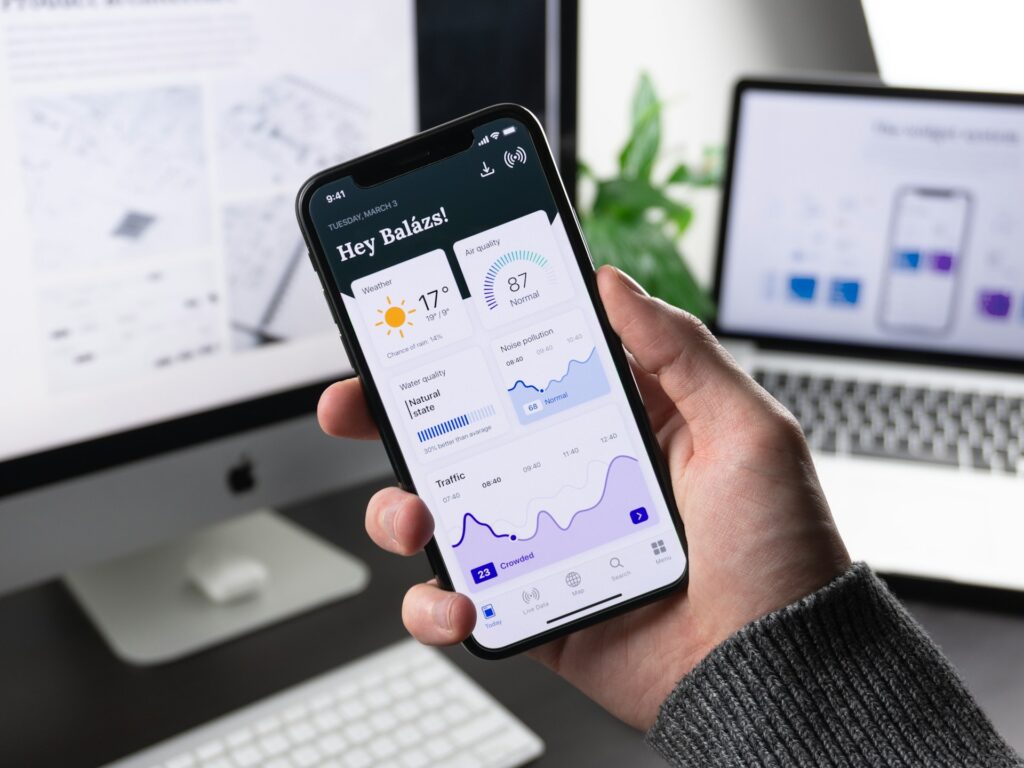Mobile app performance can make or break user experience. We rely on apps to be quick, responsive, and reliable, whether ordering food, checking the weather, or playing a game. When apps don’t work well, users get frustrated and might delete the app, meaning all your hard work goes to waste. So, taking the time to improve app performance is important for keeping users happy and coming back for more.
One way to boost app performance is by using nearshore mobile app development. It helps in accessing talented developers who might be more cost-effective but just as skilled. Collaborating closely with these teams can lead to apps that work better and are more user-friendly. With everyone on board, you can focus on making an app that shines in every way.
Analyzing Current Performance
Before diving into improvements, it’s important to know where your app stands. Analyzing the current performance gives a clear picture of what needs fixing. Here are some key steps to help with that:
1. Use Analytics Tools: Apps like Google Analytics can offer insights into loading times, user engagement, and crash instances.
2. Check User Reviews: Users often share valuable feedback that highlights problem areas. Pay attention to common complaints and suggestions.
3. Crash Reports: These reports help identify where and why your app is crashing. Fixing these issues first can often lead to immediate improvements.
4. Performance Metrics: Focus on key metrics like loading times, session lengths, and user interaction rates. Knowing these can pinpoint slow or problematic aspects.
By taking these steps, you’re not just guessing what might be wrong. Instead, you’re relying on data and user feedback to drive your improvement strategy. Addressing existing issues not only boosts performance but also enhances user satisfaction right from the start.
Optimization Techniques
To make an app excel, focus on optimizing the user interface (UI) and user experience (UX). A sleek UI not only looks good but makes the app easy to navigate. Start by simplifying the design. Keep it clear and intuitive so users find what they need without hassle. Ensure all buttons and icons are responsive and appropriately sized.
Reducing load times is key. The faster an app loads, the happier the users. Consider using lightweight images and files, and minimize the number of large assets. Compress data where possible to speed up performance. Also, check the code’s efficiency—a neat and organized codebase reduces unnecessary processing and speeds things up.
Don’t forget to optimize the backend. A well-structured database and efficient server responses keep things running smoothly. Regular checks and maintenance can prevent lags and crashes. An optimized backend paired with a clean UI ensures that users enjoy a seamless experience each time they use your app.
Leveraging Technologies
Technologies like Ruby, .NET, and Flutter can be game-changers for app performance. Ruby is known for its simplicity and convention over configuration approach, which speeds up development. .NET offers a robust framework, making it easier to build scalable applications. And Flutter is fantastic for creating beautiful, natively compiled apps quickly. Choose the right technology that aligns with your app’s needs and goals to achieve the best results.
Scalability becomes critical as user demand grows. Using efficient and scalable solutions ensures that your app can handle increased traffic without slowing down. This is where continuous integration and delivery (CI/CD) come into play. By automating testing and deployment, CI/CD helps maintain a high-quality codebase and quickly roll out updates, keeping your app performing at its best.
Regular Maintenance and Updates
Regular maintenance is like giving your app a good tune-up every so often. Updates help fix bugs, enhance security, and introduce new features to keep users engaged. Scheduling these updates ensures performance issues are addressed before they impact users.
QA and testing are your best allies in this. Rigorous testing helps identify potential problems, allowing you to fix them before users even notice. It’s a proactive approach that safeguards against unexpected troubles and guarantees reliability.
Rolling out updates without disrupting the service requires a well-planned strategy. Use incremental updates and maintain open communication with users about changes. This keeps them informed and minimizes the potential for surprises or disruptions.
Your App Partner Awaits
As your app grows and changes, keeping it running smoothly should be a priority. By applying these performance improvement strategies, you ensure that users have a satisfying experience every time. Leveraging the power of technology and embracing ongoing updates plays a big part in this process.
Remember, collaborating with skilled developers and continuously seeking new solutions can bring your app to new heights. Whether it’s optimizing for speed, enhancing the UI/UX, or ensuring scalability, these steps lay the foundation for an app that stands out in the crowd.
For those ready to take their app to the next level, exploring nearshore mobile app development can make a real difference. With the right approach, you can enhance performance and user satisfaction. Discover how NetForemost can support your journey by visiting their solutions for nearshore mobile app development.






